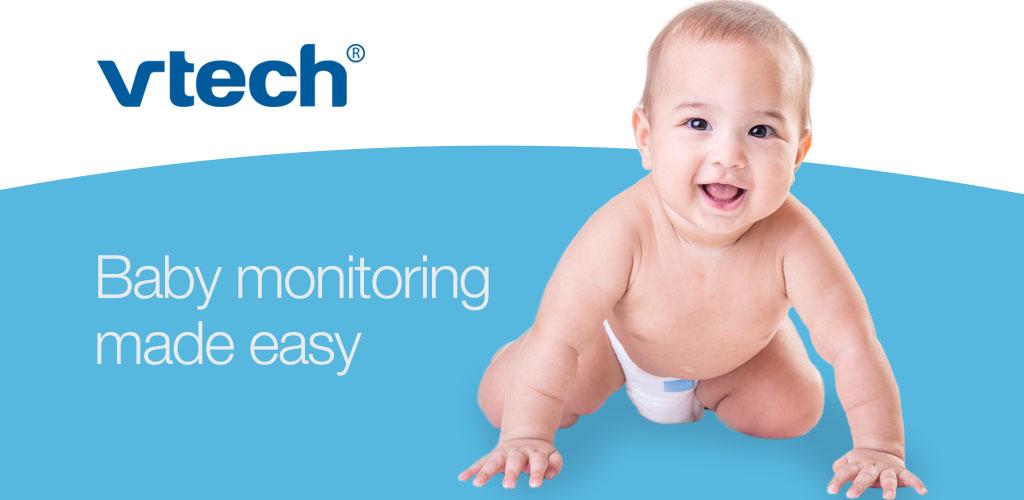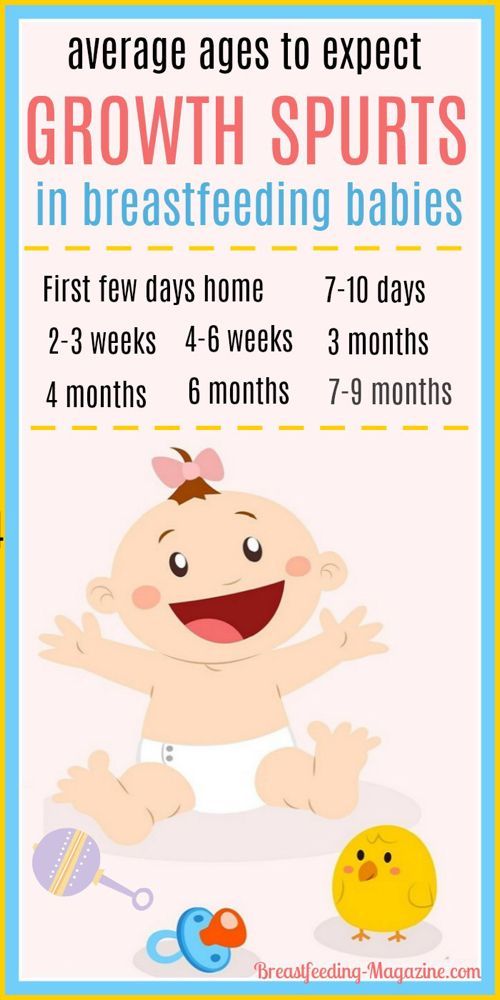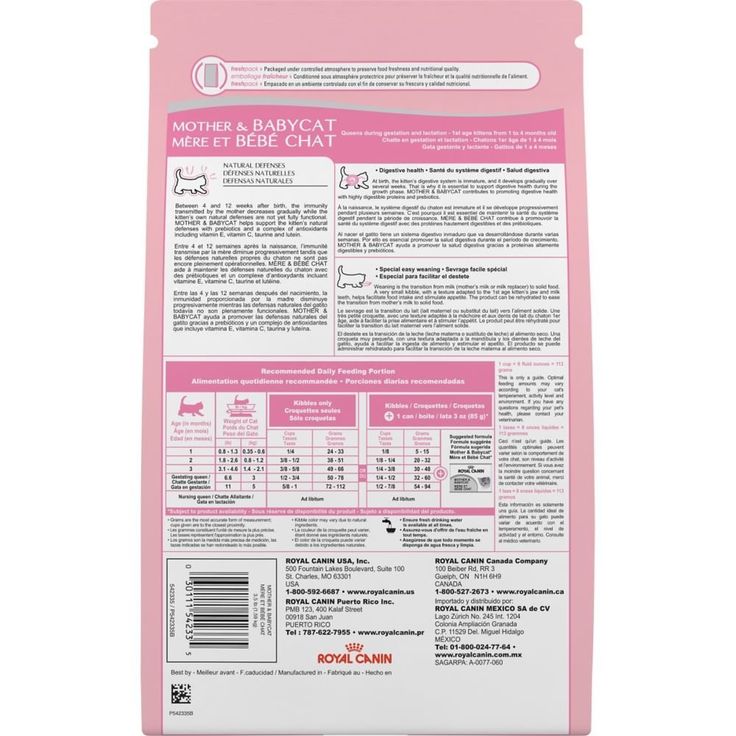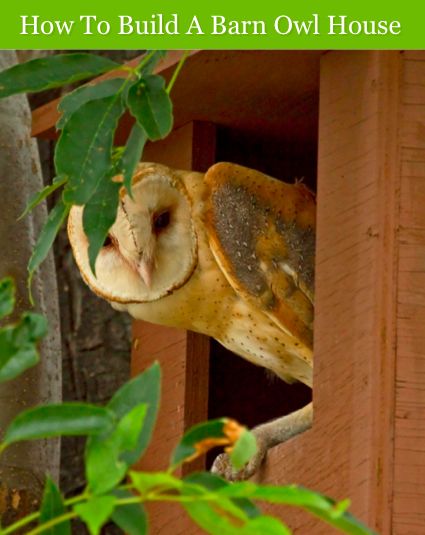How to feed budgies baby
Feeding Baby Parakeets | Parakeet Chicks | Parakeets | Guide
Rearing chicks by hand is very time-consuming, and should not be done without full appreciation of what’s involved. Always make sure to seek expert advice for any aspect of chick-feeding, and take time to watch some instructional videos. This will boost your confidence and minimise the chance of you messing something up.
Even if you have a healthy pair of birds doing all the hard work for you, you should still know what to do if things don't quite go to plan. Mishaps could be anything from a sick male bird (meaning that he won’t be able to feed the hen) to an abandoned nest. Baby parakeets are very delicate creatures, and if the mishap occurs early in the rearing process -- within the first two weeks -- your chances of successfully weaning the birds are slim. Rearing a freshly-hatched bird is something none but the most experienced breeder should attempt.
A six-week-old parakeet
Feeding Parakeet Chicks
There are several parakeet chick feeds and additives that can be purchased online or in larger pet-stores. These should offer the correct mix of nutrients, vitamins and minerals needed to raise the chicks. Always make sure to consult with an expert before opting for any particular brand. Don’t be tempted to make a choice based on price, as cheap mixes are often not good enough for such fragile, young creatures.
Chick food should be mixed according to the instructions on the packet. It will usually have a gloopy consistency, and, like Baby Bear’s porridge, should be neither too hot nor too cold. If the feed is too hot, it can scald the bird’s crop and throat: if too cold, it may lodge itself in the chick’s crop and lead to a fatal condition known as “sour crop”. Again, just make sure you read the instructions.
The food each chick receives should be carefully measured, and should be served at a temperature similar to that of the regurgitated seed of an adult bird (the chick's natural food source). You can use a thermometer to measure the temperature precisely. Never be tempted to heat up the food quickly in the microwave, as this can lead to hot spots in the food.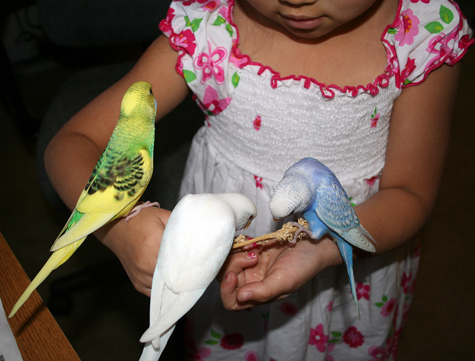 An ideal temperature for this food is between 105-110F.
An ideal temperature for this food is between 105-110F.
How to Feed Parakeet Chicks
The food can be offered on a plastic spoon with bent edges (dip the end of a standard plastic teaspoon in boiling water and then bend the edges inward -- this funnels the food into a relatively narrow gap), or alternatively you can feed them via a wide-nozzle syringe. Many breeder rig up their own spoon-syringe hybrid
The syringe is good as it allows you to measure the quantity of food you are administering` There are however choking hazards to beware of though, so a spoon is advisable once the chick is old enough to feed this way (at around 10 days old). The spoon allows the chick to swallow the food at it’s own pace, but does not recreate the “regurgitated seed” flow as well as the syringe.
Experts may sometimes opt for a “crop-needle”, this is a tube attached to the end of a syringe and inserted directly into the chick's crop. This takes a lot of care, however, and should not be attempted if you don’t know exactly what you’re doing.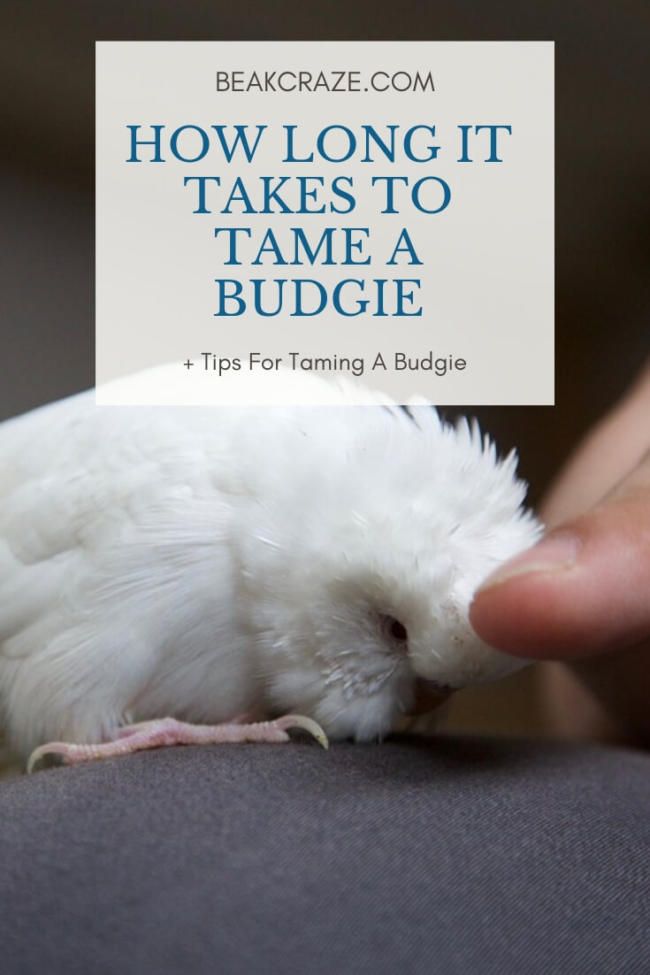
No matter what feeding method you opt for, make sure all equipment is suitably sterilized before giving it to the chick, and any unused food should be discarded. Always make the food fresh and refrain from preparing it ahead of time.
Keeping a young chick warm whilst feeding them is also important. They should be placed onto a cosy towel or similar soft object for feeding. The aim here is to impersonate a soft, warm hen.
Gently tap on the bird’s beak with your spoon or syringe, just like it’s mother would. The bird will obligingly gape (open it’s beak to receive the food). Deliver the mixture sideways on, coming in at a 90 degree angle to the front of the beak (i.e. don’t feed from the front, as this could force the upper part of the beak too far upwards, and it’s not the way parent birds approach the job).
Don’t syringe or pour in all the food at once. The chick needs time to swallow, and can easily choke on too much too soon. It will let you know when it’s had enough, by simply closing its beak and refusing to reopen. If the bird hasn’t eaten its usual amount, don’t force-feed it. If the lack of appetite persists for the next few feeds, seek medical advice. A blocked crop can sometimes be remedied with a small squirt of warm water and some gentle crop-massage – but you really need to know what you’re doing. Always have the vet or breeder’s phone details at hand.
If the bird hasn’t eaten its usual amount, don’t force-feed it. If the lack of appetite persists for the next few feeds, seek medical advice. A blocked crop can sometimes be remedied with a small squirt of warm water and some gentle crop-massage – but you really need to know what you’re doing. Always have the vet or breeder’s phone details at hand.
The food will have cleared from a healthy chick’s crop within 2-4 hours depending on it;s age, and it will need feeding every 3-4 hours. As stated above, if your chick isn’t hungry, it won’t gape. Feeding is a full time job, at least six times a day, and you can only retire at sunset. No one said this is going to be easy!
baby parakeets grow alarmingly quickly, and their food intake needs to grow with them. At two weeks old, depending on the chick’s size, they will take 2-4ml at each feed. At three weeks this increases to 4-6ml, and 5-8ml by five weeks old.
Feeding a 3 Week Old Parakeet
Things become much easier at 3 weeks old. The parakeet chick will now resemble an unkempt miniature dinosaur, with a rather ugly mix of down and pin feathers, and a lot of the character and curiosity that will stay with them throughout their lives. At this point in their lives feeding won’t be such a challenge. Usually every four hours. The bird will happily receive your attentions throughout 16 hours on a long summer’s day, though.
The parakeet chick will now resemble an unkempt miniature dinosaur, with a rather ugly mix of down and pin feathers, and a lot of the character and curiosity that will stay with them throughout their lives. At this point in their lives feeding won’t be such a challenge. Usually every four hours. The bird will happily receive your attentions throughout 16 hours on a long summer’s day, though.
A five-week-old parakeet
Feeding a 5 Week Old Parakeet
At around 5 weeks old you can start putting food on the ground or in bowls, and letting the parakeet indulge in its natural instinct to forage. At around 6-7 weeks old the bird should be fully self-sufficient. You will still need to keep an eye on their feeding behavior, however, as not all parakeets become independent as swiftly as the average bird. Some hand feeding may still be in need at seven weeks old.
How to Hand-Rear Budgies | Pets on Mom.com
By Karen Mihayloi Duncan Smith/Photodisc/Getty Images
Budgies, or budgerigars, are small Australian parrots. Their natural coloration is light green, though pet industry breeding has created some color mutations. It's best to let the parents raise the chicks, but occasionally the parents will abandon a chick or even the whole clutch. If this happens you must find foster parents for the chicks, or hand-rear them.
Their natural coloration is light green, though pet industry breeding has created some color mutations. It's best to let the parents raise the chicks, but occasionally the parents will abandon a chick or even the whole clutch. If this happens you must find foster parents for the chicks, or hand-rear them.
The Brooder
Young budgie chicks are kept warm by their mother. Hand-reared chicks require an ambient temperature of about 98 degrees Fahrenheit until their feathers grow in. You'll want a nesting box or brooder for this. Don't clean the nesting box while it contains hatchlings; clean it after the chicks develop feathers.
Formula
Purchase a hand-feeding formula specifically made for budgerigars. Carefully follow the directions on the formula container. Typically you'll mix powdered formula with sterile bottled water that's heated to 103 degrees Fahrenheit. The ratio of water to formula is determined by the age of the chicks. For proper digestion, the formula temperature should be 98 degrees Fahrenheit. Keep the formula warm during feeding by placing it in a bowl of hot water. Never heat the formula in a microwave; hot spots can occur and may burn the chicks. Discard any unused formula after each feeding.
Keep the formula warm during feeding by placing it in a bowl of hot water. Never heat the formula in a microwave; hot spots can occur and may burn the chicks. Discard any unused formula after each feeding.
Feeding Technique
Use a small needleless syringe or eyedropper to feed baby budgies. Formula for newly hatched chicks is the consistency of applesauce. Hold each chick in your hand with his back against your palm, supporting his head. Gently insert the dropper tip into the back corner of the chick's beak, and drip the formula into his mouth. Don't overfeed; his crop will fill out, but the skin shouldn't become tight. Don't let the food fill his throat. After feeding, carefully clean inside the chick's beak with a damp cotton swab. Bacterial growth can occur if uneaten food is left inside his beak.
Feeding Schedule
Follow the formula directions for feeding schedules, and allow the chick's crop to empty between feedings. Feed the chicks every 1 to 2 hours, day and night, for the first few days. Gradually increase the times between feedings as your chicks grow. Three-week-old budgies will eat about four times a day. Budgerigar chicks should gain weight every day. For the first two weeks of life, healthy chicks gain 15 percent of their body weight daily.
Gradually increase the times between feedings as your chicks grow. Three-week-old budgies will eat about four times a day. Budgerigar chicks should gain weight every day. For the first two weeks of life, healthy chicks gain 15 percent of their body weight daily.
Weaning
Provide fresh water, budgerigar seed mix, millet spray and cuttlebone when the chicks are about 4 weeks old. Begin introducing them to fresh fruits and vegetables now. Remove any uneaten produce at the end of the day. Budgies enjoy leaf lettuce, kale, parsley, broccoli and strawberries. Continue offering them formula until they're about 6 weeks old and are eating well on their own.
Fledging
Budgie chicks are fully feathered at around 4 weeks old. They're beginning to explore the world and attempting to fly. They'll sit on perches and flap their wings, exercising the wing muscles as they prepare for flight. Provide a safe place for your budgie chicks to fly. Protect them from windows, fans, poisonous plants and household pets.
References
- Cage'n Bird: Hand Feeding - Implements, Method and Technique
- Budgie and Parakeet Place: Budgie Breeding
Resources
- BirdChannel.com: Want to Breed Budgies/Parakeets?
Photo Credits
Writer Bio
Karen Mihaylo has been a writer since 2009. She has been a professional dog groomer since 1982 and is certified in canine massage therapy. Mihaylo holds an associate degree in human services from Delaware Technical and Community College.
What to feed a budgerigar? - Sami with Mustache
Most people who have budgies for the first time start out feeding them only grains. But the diet of birds should be varied: you need to include fruits, vegetables and even branches in it.
The second common mistake when feeding a pet is to give him human food, such as cheese or bread.
What products can be included in the pet menu, and which ones can be abandoned forever, we will consider in this article.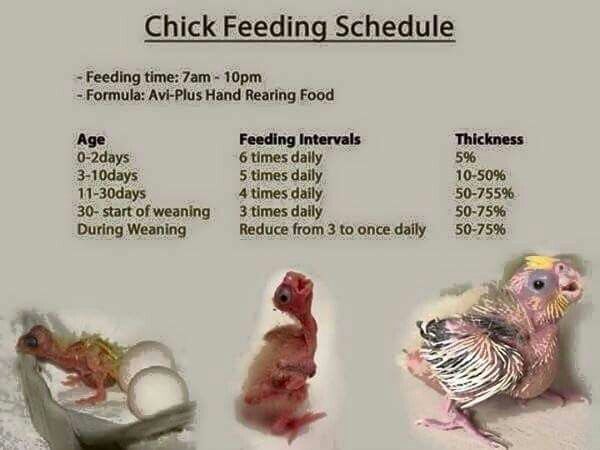 nine0003
nine0003
Grain mixtures
Cereals are the basic food for birds. This is the easiest answer to the question of how to feed a new friend.
Grains normalize the work of the digestive tract. Make sure your pet has constant access to food.
You can buy grain mixture at the pet store or make your own. The food is available in transparent and opaque packages. The advantage of the former is that you see the composition and quality.
In the second case, it is worth buying from trusted manufacturers. Grains must be sold in vacuum bags. nine0003
The best option is to make your own mixture. Optimal ratio of grains (in percent):
- yellow millet - 50;
- red millet - 25;
- white millet - 15;
- shelled oats - 10.
It is necessary to monitor the state of the mixture. If she has grown old, mold has appeared or bugs have started, you can’t feed the parrot with this.
The healthiest fruits and vegetables for parrots
Budgerigars' favorite treats are fruits and vegetables. They contain vitamins, trace elements and fiber, which are necessary for birds. It is recommended to add these products to their menu all year round.
They contain vitamins, trace elements and fiber, which are necessary for birds. It is recommended to add these products to their menu all year round.
- Cabbage. The main vegetable for a parrot in winter. It is stored for a long time, contains many useful trace elements. Give the leaves raw, without the stalk. Broccoli, white cabbage or Beijing cabbage are allowed.
- Carrot. Cut into small pieces or rubbed on a grater. Use only fresh vegetables. Bird from carrots receives vitamin C and beta-carotene. You can mix carrots with other vegetables. nine0024
- Cucumbers. Helps to better assimilate the rest of the products. Quench thirst, contain vitamins E, microelements.
- Tomatoes. In the summer season, be sure to include them in the bird's diet. Tomatoes contain vitamin B, ascorbic acid. Give the pulp only ripe fresh fruits. Unripe tomatoes are contraindicated for birds.
- Beets. Contains a large amount of antioxidants. It, like cabbage, is given raw all year round.
 In addition to saturating the bird's body with vitamin A and C, beets normalize digestion. nine0024
In addition to saturating the bird's body with vitamin A and C, beets normalize digestion. nine0024
Zucchini is a storehouse of fiber. Be sure to give it raw. Helpful for proper bowel function.
From fruits and berries, you can give a feathered pet:
- bananas,
- apples,
- pears,
- peaches,
- pineapples,
- kiwi,
- citrus fruits,
- pomegranate,
- cherry,
- raspberries,
- strawberries,
- strawberries.
In summer, the parrot can be fed with melon and watermelon.
Fruits and berries must be peeled and pitted. Cut large fruits into pieces. In winter, fresh fruits are replaced by dried fruits, such as raisins or dates.
And now let's take a closer look at the vitamin and mineral composition of fruits:
- Bananas are rich in potassium. This microelement is necessary for pets as well as people. nine0024
- Apples contain many vitamins and enzymes useful for poultry.
 The use of these fruits normalizes the digestive system. It is advisable to give them every day.
The use of these fruits normalizes the digestive system. It is advisable to give them every day. - Pear contains pectin, carbohydrates, iron and phosphorus. Thanks to it, the pet's body is saturated with minerals, energy, and the digestion process improves. When choosing, give preference to hard fruits.
- Peaches improve digestion, contain copper and iron. These fruits are given to weakened birds to stimulate their appetite. nine0024
- Pineapples strengthen the muscular and vascular systems. It is recommended to give in canned form.
- Give kiwifruit to pets during beriberi (end of autumn, winter, beginning of spring). The fruit will strengthen the immune system and protect against diseases.
- Pomegranates will ensure the healthy functioning of the budgie's cardiovascular system. The maximum daily allowance reaches 1/6 of the fruit. A few grains are enough for a bird.
- Of the citrus fruits, oranges are recommended: they contain carbohydrates, fiber, and antioxidants.
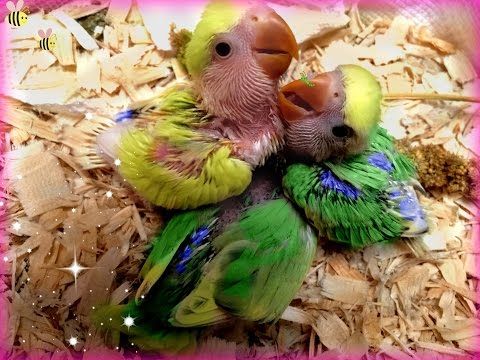 Like kiwi, a great immune boosting food. nine0024
Like kiwi, a great immune boosting food. nine0024
It is worth refraining from persimmons, mangoes, papaya and avocados. What harm they bring to birds, we will understand further.
Herbs and greens
Some types of greens can harm the pet's body. Do not give him parsley, dill and green onions. It is strictly forbidden to feed the budgerigar with tomato tops.
Will bring benefits:
- horse sorrel, nine0023 arugula,
- celery,
- plantain,
- clover leaves.
Wild plants cannot be collected near the roadway.
Do not let the parrot peck at houseplants and bouquets - they are toxic to the bird.
Twigs of trees - how to give?
If you have had parrots before, you probably know how they love to “nibble” everything. Therefore, it is worth placing branches of fruit trees in a cage. They will be both a toy and food. nine0003
Choose trees away from roads, industrial areas. Check the branches for resin.
Check the branches for resin.
After pruning, the branches are soaked in water for 4 hours, washed and doused with boiling water. Branches of what plants can be given to a parrot?
- apple trees,
- birches,
- willows,
- rowan,
- viburnum,
- sea buckthorn,
- hazel.
You can also cut a bush of currants, raspberries. nine0105
Kashi
Porridge will give the parrot the necessary minerals, normalize metabolism. When cooking, only water is used, without the addition of oil, salt, sugar. Do not use instant cereals.
Cook for your pet only from high-quality buckwheat, oatmeal, lentils, barley. Grains should be boiled for 10 minutes.
You can also give rice and wheat porridge. Their cooking time is 20 minutes.
Germinated sprouts
It is necessary to include sprouted grain in the diet of a parrot so that its body receives vitamins E and B2.
How to cook sprouts at home?
- Fill the bottom of a deep dish with grains, fill with water to cover them a little.
- Change fluid every 4 hours and rinse beans.
- After a few days, sprouts will appear. For a parrot, a shoot up to 2 mm in height is enough. nine0024
- The sprouts are dried before being given to the bird.
Before the first molt, small chicks are given 1 tsp. sprouts 2 times a week. Then once a month.
Mineral additives
The key to feeding a parrot is mineral supplements. For example, a bird will benefit from feed chalk saturated with calcium. You need to buy special chalk for birds, because intended for rodents can harm the health of a parrot. Other sources of minerals: nine0003
- Combined mixtures. Those sold in pet stores contain a 70:30 ratio of shell rock to chalk. Manufacturers often add small amounts of eggshells and charcoal to them.
- Stones. They come with iodine, iron, zinc, magnesium and calcium.
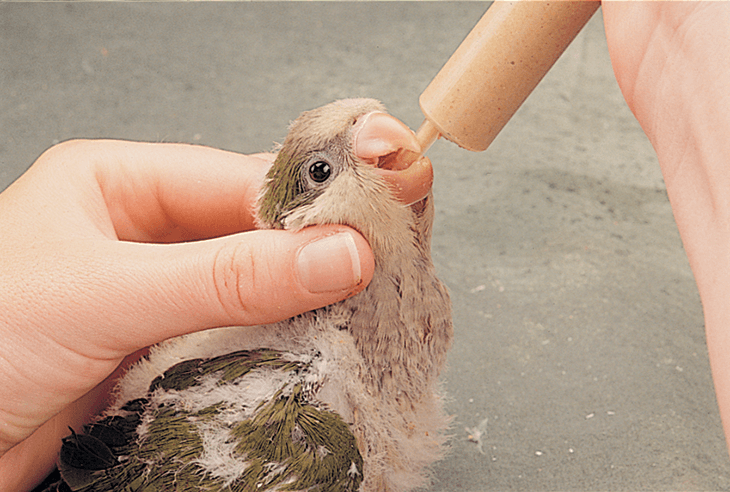 These elements are responsible for the health of the skeleton, endocrine glands.
These elements are responsible for the health of the skeleton, endocrine glands. - Sepia (cuttlefish shell). Rich in Na, K, Mg, P, which protect the beak from deformation. Give preference to sepia white with a slight yellow tint. nine0024
- Organic sand. Consists of crushed shells. Promotes the grinding of food in the goiter.
- Chicken eggshell. Due to the content of potassium, it strengthens the skeleton, creates a protective layer of the shell when laying eggs
- Birch charcoal. Storehouse of calcium and iron. It will be a detox for your pet.
Large solid minerals are attached to the bars of the cage, the mixture is poured into a plate.
Rehydration for parrot
Water is an essential element for all living things. When caring for a pet, make sure that the water in the drinking bowl is clean and fresh.
Change fluid every day. Its temperature should be 15-20 degrees. It is better to pour water in small portions.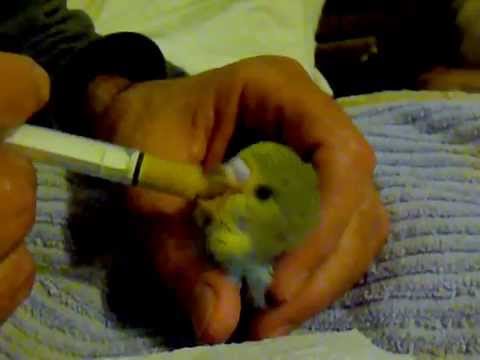
However, water is not the only way for a parrot to replenish its water balance. There is another one - juicy fruits, vegetables and grass. He receives part of the necessary liquid from these products.
Periodically, to protect against a fungal infection, the parrot is given water with 2-3 drops of lemon vinegar or lemon juice. This amount is calculated for 100 ml of liquid. nine0003
Juices are useful for birds, but only cooked at home. From the list of allowed fruits and vegetables, prepare freshly squeezed juices. They can be diluted with water.
Natural products spoil quickly - make sure that the juice does not ferment, otherwise it will harm the pet.
Prohibited products for budgerigars
In some sections of the article, products that are prohibited for parrots have already been mentioned. In addition to them, you can not give your pet: nine0003
- salt and sugar;
- nuts of any kind;
- seeds and stones of certain fruits and berries;
- onion and garlic;
- meat products, fish;
- mushrooms;
- coffee, tea;
- dairy products;
- soda;
- alcohol;
- chips, crackers and other fast food.
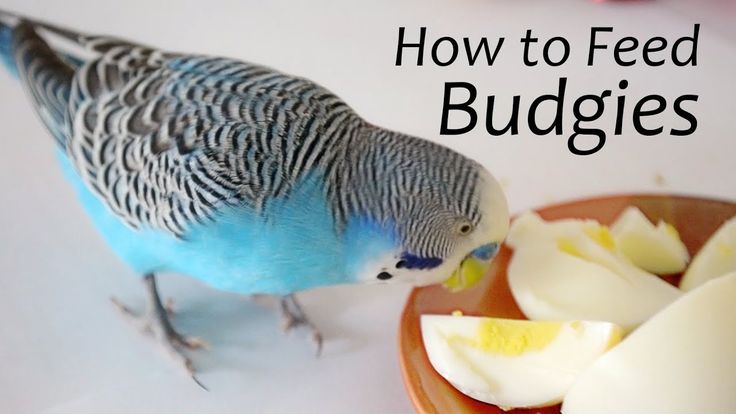
For chicks aged 3 to 4 months, a boiled egg and cottage cheese are added to the diet. After the first molt, these products are excluded. nine0003
The most dangerous foods for a budgerigar that can lead to his death are avocados, alcohol, chocolate and salt.
Let us consider in more detail why it is forbidden to give the rest of the products from the list.
Herbs such as dill and parsley are high in essential oils. These substances, toxic to the bird, eventually lead to disruption of the functioning of its internal organs.
Opinions differ on spinach. It contains a large amount of oxalate, which binds calcium and other trace elements. Because of this, useful substances are not absorbed, and oxalates are deposited in the form of kidney stones. nine0003
Spinach can be given to birds with healthy organs, but in a minimal amount. If in doubt whether your pet has kidney problems, refrain from this greenery.
It is imperative to peel and pit fruits and berries: apple, pear, and cherry seeds contain cyanide, and pesticides accumulate in the skin of fruits.
Fresh onions and garlic can sometimes be given to your pet as a prophylaxis against parasites and fungi. But in small quantities. Excessive consumption of these vegetables will lead to hemolytic anemia, and subsequently to the death of the animal. nine0003
Coffee and tea contain caffeine, an overdose of which will cause a bird to have a heart attack. This is also the danger of energy and carbonated drinks.
If your parrot is sick, feels weak, it is permissible to give him weak tea: the drink will have a tonic effect.
Mushrooms cause indigestion, and some of their species - liver failure.
Finally, a few more restrictions: nine0003
- The nuts are too fatty.
- Sorrel causes kidney problems.
- Mango and papaya are supplied unripe and therefore contain toxic substances.
The body of a parrot is designed to digest grains, tree bark, fruits and berries. If your pet gets all this, he will be healthy and cheerful.
How to feed a budgerigar at home?
Contents
1 Corn 2 Vegetables 3 Greenery four Fruit nine0003
4 minutes
estimated reading time
Budgerigars are amazingly beautiful birds that are unpretentious and do not require complex care. The most important thing is to organize the right diet, because their health will depend on it!
What to feed budgerigars? The choice of "dishes" for the pet is varied. They love vegetables, fruits and herbs, but grains are the basis of the diet.
They love vegetables, fruits and herbs, but grains are the basis of the diet.
- Grain
Almost any pet store sells special grain mixes for parrots. It is better to choose food in transparent packaging, so you can evaluate the quality. And from opaque packages, you need to choose those in which the grains are stored in a vacuum (without air and other gases). Otherwise, be prepared for the fact that the products may not be of the best quality or even moldy.
If you want to combine food yourself, use only high-quality millet and oats. Grains are the basic food for birds, they determine the proper functioning of the digestive system, so the pet should always have access to them. The following ratio is recommended: nine0003
- yellow millet - 50%;
- red - 25%;
- white - 15%;
- oats (peeled) - 10%.
In the process of determining what to feed a budgerigar at home, one must remember that sprouted grain must be included in the diet: it contains useful vitamins E and B2.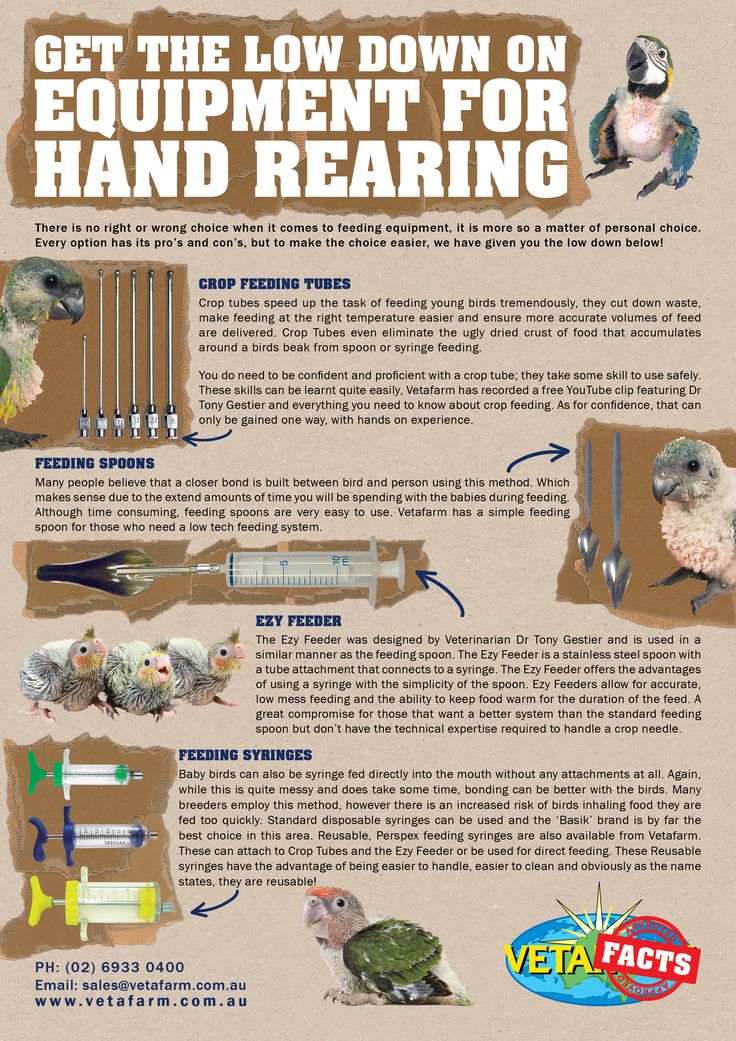 You can easily cook it yourself. To do this, put the grains on the bottom of the container (in one layer) and pour warm water so that it covers the grains a little. It will be great if you can renew the liquid in the container and rinse the grain every four hours. After a couple of days, sprouts will be visible, they will be tiny - only 2 mm in length, but it is at this stage that the grains are most useful for parrots. Rinse and dry before feeding. nine0003
You can easily cook it yourself. To do this, put the grains on the bottom of the container (in one layer) and pour warm water so that it covers the grains a little. It will be great if you can renew the liquid in the container and rinse the grain every four hours. After a couple of days, sprouts will be visible, they will be tiny - only 2 mm in length, but it is at this stage that the grains are most useful for parrots. Rinse and dry before feeding. nine0003
Make sure that they do not become moldy and do not overgrow, as such sprouts lose their valuable properties.
What else can you feed a budgerigar? First of all, these are vegetables, fruits and herbs. Often young birds are wary of such food, but if you cut vegetables and fruits into small pieces or pass them through a grater, your pet will definitely appreciate them!
Before feeding, be sure to rinse the fruits and greens with running water! nine0003
- Vegetables
Parrots love them very much, and still: it is tasty and healthy! They contain many vitamins and minerals, as well as fiber, so you should include such foods in your diet throughout the year.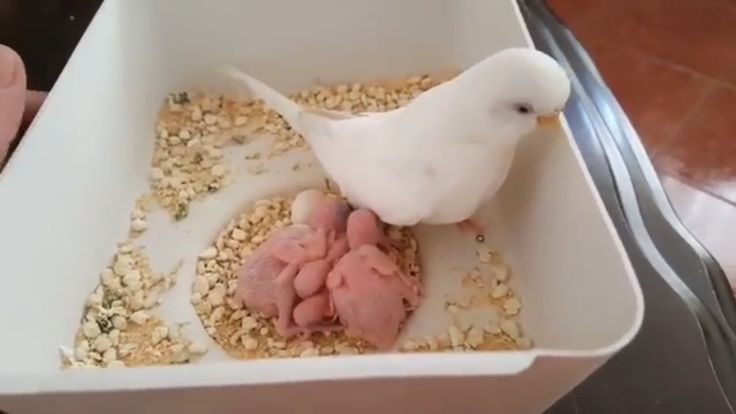
Vegetables such as carrots, fresh cucumbers, tomatoes, beets, zucchini, etc. will be useful for your pet. You can also feed parrots with turnips and various types of cabbage, but first you need to pour boiling water over them. nine0003
- Greenery
Do not feed dill, green onions, eggplant, tomatoes, potatoes, etc. to birds - these greens are harmful to them!
When you are planning the best food for your budgerigar, be careful with the parsley. It only works in small quantities. But horse sorrel, arugula, celery (not roots), tops of carrots and radishes can and should be included in the diet! In the summer, pamper the birds with strawberries (both berries and leaves will go with a bang), plantain, clover leaves and flowers, etc. Plants for feeding a parrot should be collected away from roads and factories, in areas with clean healthy soil. nine0003
Spinach can also be added to the diet, but not much, and if the bird does not have kidney pathology.
If your house has indoor plants or flowers in bouquets, do not let the parrot eat them: they are dangerous!
So that the pet does not lack greenery during the winter months, you can grow cereals and vegetables at home right on the windowsill. It's easy and the benefits are huge!
- Fruit
Among other things, feed budgerigars at home should be fruits and berries. It is recommended to include in the diet bananas, apples and pears (the seeds and the core must first be removed), peaches, pineapples, kiwi, peeled oranges, tangerines and lemons, as well as some grapes. Of the berries, pitted cherries, raspberries, strawberries, strawberries will be useful. You can also feed melon and watermelon to your pets, but it is better in the summer season. nine0003
In the winter months, include dried fruits in the parrot's diet: raisins, dried apricots (steamed), dates, etc., as well as frozen berries, for example, lingonberries and blueberries are useful.
You can not feed the birds persimmons, mangoes, papaya, avocados, as well as any nuts!
You can already see how varied the diet is, but that's not all! They will be happy to taste porridge, boiled or steamed in boiling water. It should be cooked only on water, you can not add oil, salt and sugar. Use only high-quality cereals, and never feed your parrot instant porridge, which contains additives that are harmful to birds. nine0003
The last key point on the question of what you can feed budgerigars is mineral supplements, which should always be freely available in the pet's cage. So what is it like and what is its use? For example, chalk saturates the body with calcium, mineral stones containing iodine and seaweed provide useful trace elements, sepia is used by parrots to sharpen their beaks, organic sand allows you to control the state of the digestive system (it should be given no more than once a week), etc. nine0003
Choose only special quality top dressings and in no case use inorganic sand, this will harm the bird!
Ready-made quality balanced food for budgerigars is another way to organize the ideal diet.


